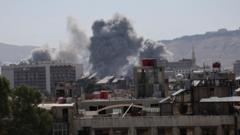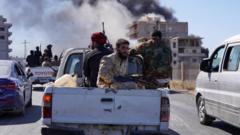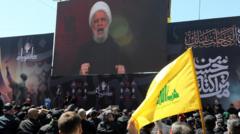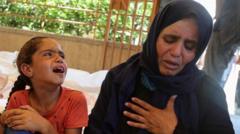A powerful earthquake that struck Tibet has left at least 126 dead and over 3,600 buildings destroyed, with search operations ongoing as night falls and temperatures drop.
Tibet Quake: Search for Survivors Continues Amidst Freezing Conditions
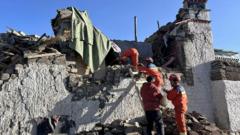
Tibet Quake: Search for Survivors Continues Amidst Freezing Conditions
Rescue efforts are hampered by extreme weather as teams rush to find survivors after a devastating earthquake in Tibet.
A significant earthquake, measuring 7.1 on the Richter scale, has devastated a remote area of Tibet, resulting in the loss of at least 126 lives and impacting thousands of homes. The catastrophe hit the region at 9:00 AM local time on Tuesday, triggering a large-scale rescue operation as authorities scramble to assist the injured and locate survivors.
The earthquake struck in the northern foothills of the Himalayas, with a depth of 10 km, and was also felt across neighboring Nepal and parts of India. Chinese state media reported that over 3,000 buildings were damaged, pushing emergency services into action as night approached, with frigid temperatures expected to plummet to -16C.
Reports indicate that 188 people were injured in the quake, and rescue operations continued into the night, with helicopters deployed to survey the damage. Videos aired by state broadcaster CCTV revealed scenes of destruction in Shigatse city, where rescuers distributed blankets to those affected and navigated the debris.
Sangji Dangzhi, a local whose supermarket sustained damages, shared the extensive destruction of homes, noting that many structures built from dirt were unable to withstand the tremors. "Lots of houses collapsed," he stated, highlighting the community's urgent need for assistance.
According to reports, around 3,609 structures were reported collapsed by midday, signifying a potential humanitarian crisis as residents faced shelter shortages. With temperatures already hardening conditions, the emergency has escalated. Power and water supplies have also been interrupted, further complicating rescue efforts.
First-hand accounts from locals describe intense shaking that jolted them from sleep. One hotel resident recalled the sensation of shaking so strong that it felt as though their bed was rising, prompting a quick evacuation onto the street where helicopters were spotted overhead.
State media and the US Geological Survey provided varying reports on the magnitude, with Chinese reports indicating a slightly lower measurement of 6.8. A researcher from the China Earthquake Networks Center mentioned the likelihood of a smaller aftershock but deemed it improbable that a larger quake would follow.
The epicenter of the quake was near Tingri county, a common base for climbers heading to Mt. Everest. Due to the situation, sightseeing tours were immediately canceled to ensure public safety.
The Dalai Lama, a prominent spiritual figure for Tibetans, expressed sorrow over the catastrophe, offering prayers for the deceased and a speedy recovery for the injured. His sentiments were echoed by Tibetan communities feeling the impact of the disaster amid ongoing tensions surrounding Chinese governance of Tibet.
In Nepal, although residents felt strong tremors, official sources reported no casualties or major structural damage. However, the quake did evoke memories of the destructive 2015 earthquake that resulted in significant fatalities and injuries across Nepal.
As efforts continue to locate survivors and provide relief, President Xi Jinping has called for a thorough search and rescue operation to minimize further loss and support affected residents in this time of crisis.








